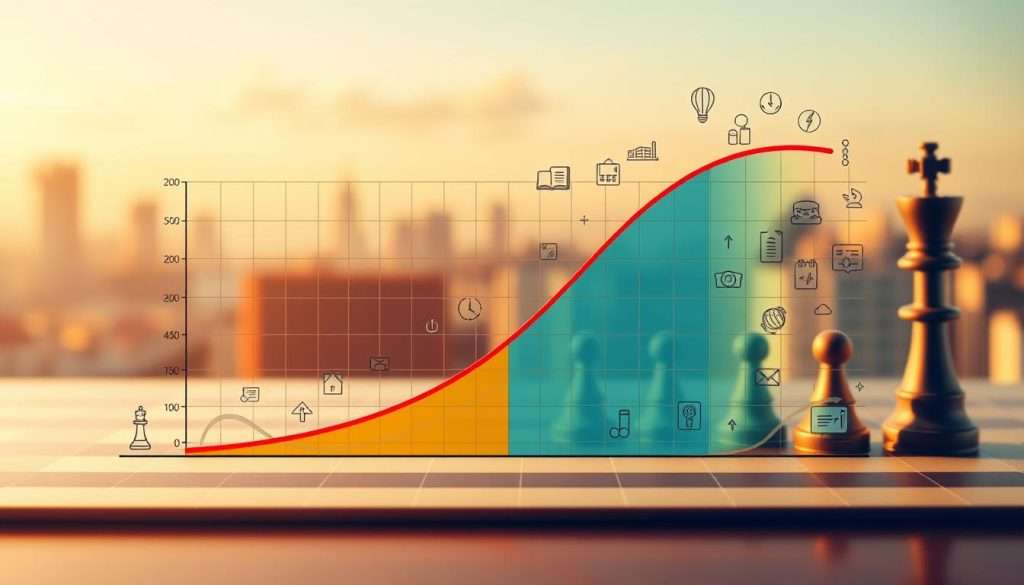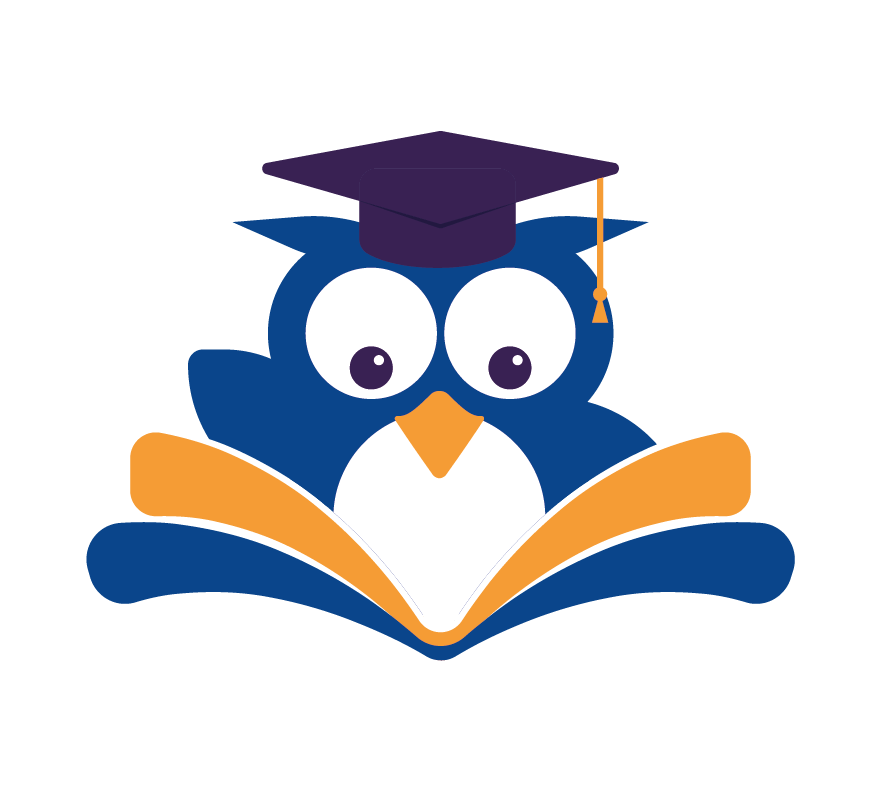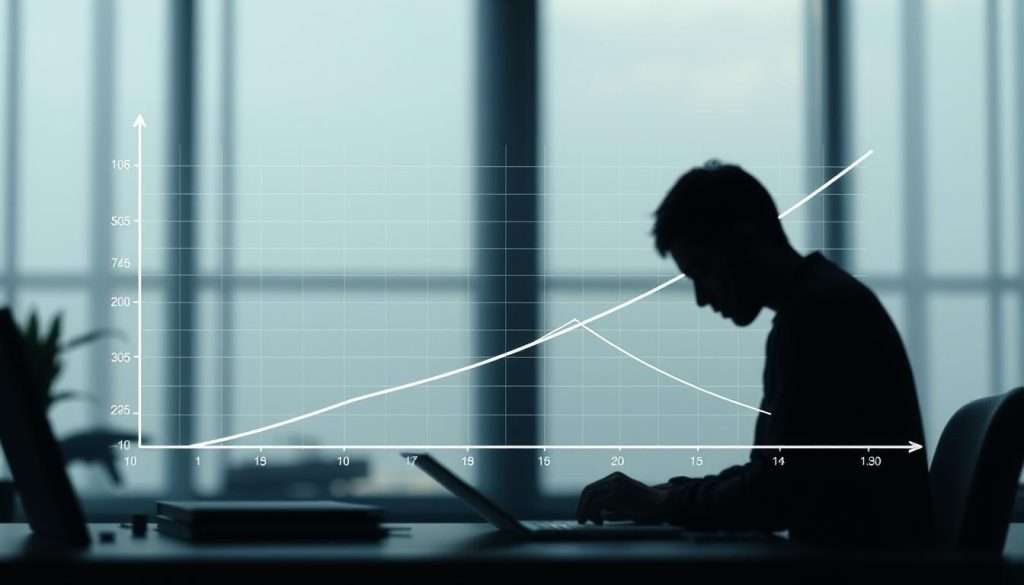We’ve all heard “practice makes perfect.” But why does doing something over and over make it easier? This is where learning curves come in.
Learning curves show that tasks need less time and effort the more we do them. Our brains make new paths as we repeat tasks. This makes them faster and easier to do.
Knowing about learning curves can improve your study habits. It helps you see how tasks get simpler with practice. This lets you face tough challenges with more confidence.
Key Takeaways
- Learning curves show how tasks get easier with practice.
- Doing a task more often makes it quicker and uses less resources.
- Understanding learning curves can make studying more effective.
- Knowing about learning curves boosts confidence in tackling hard tasks.
- Learning curves are key for learning and improving skills.
The Science Behind Learning Curves
Learning curves are key to understanding how we learn and grow. They show how our skills or knowledge change over time. This tool helps us see how fast we pick up new things.
Definition and Basic Concepts
A learning curve shows how good we get at something over time. The curve’s shape changes based on who we are, what we’re doing, and where we learn. They help us track and predict our learning, which is vital in school, work, and personal growth.
The idea of learning curves has been around for over a century. Hermann Ebbinghaus, a German psychologist, first described the learning curve in 1885. His work on how we learn and forget has shaped education and psychology.
Historical Development of Learning Curve Theory
Since Ebbinghaus, the theory has grown a lot. Researchers have dug deeper into learning and skill building. Now, learning curve theory is used in many areas, like making things and teaching.
Knowing about learning curves helps us learn better. It lets us plan our learning to reach our goals faster.
As we keep studying learning curves, we’ll learn more about them. We’ll see how they work, the types of curves, and how to improve your learning.
How Do Learning Curves Work: The Core Mechanics
Let’s explore the core mechanics of learning curves. Knowing these is key to better learning. The learning curve theory says that learning at first takes more effort than it’s worth. But, as you keep going, the effort pays off, and learning gets easier.
The Four Stages of Competence
The learning journey has four main stages:
- Unconscious Incompetence: You don’t know what you don’t know.
- Conscious Incompetence: You know what you lack but can’t do it yet.
- Conscious Competence: You’ve learned the skill, but it takes focus to use it.
- Unconscious Competence: The skill is automatic; you do it without thinking.
Knowing these stages helps you learn better, based on where you are.
Cognitive and Physical Learning Differences
Learning curves vary for mental and physical skills. Mental learning is about understanding and processing info. Physical learning is about mastering motor skills.
- Mental learning, like learning a new language, starts with grammar and vocabulary.
- Physical learning, like sports, builds muscle memory through practice.
Knowing these differences helps improve your learning efficiency. Tailoring your learning to the skill type makes your time more valuable.
Types of Learning Curves You Should Know
Knowing about different learning curves can really help you learn better. You’ll see how skills and knowledge grow over time. This knowledge is key to improving your learning.
Linear Learning Curves
A linear learning curve means you progress at a steady pace. Each step builds on the last one. This curve is common in tasks that are simple and repetitive.
Example: Putting together furniture from instructions is a good example. Each step is easy and builds on the last one.
Exponential Learning Curves
An exponential learning curve starts slow but gets faster as you get better. It’s common in areas where learning is hard at first but gets easier once you reach a certain point.
For instance: Learning a new programming language is like this. At first, it’s hard to understand the basics. But once you get them, you can learn a lot more quickly.
Logarithmic Learning Curves
A logarithmic learning curve is the opposite of exponential. You learn fast at first but then slower. This curve is seen when you quickly learn a lot of information at the start.
Example: Learning the basics of a new language is like this. You might quickly learn common phrases and basic grammar. But learning the finer points takes longer.
S-Shaped Learning Curves
An S-shaped learning curve combines elements of exponential and logarithmic curves. It starts slow, then speeds up, and then levels off. This curve is common in complex skills that need both basic and advanced knowledge.
| Type of Curve | Initial Progress | Mid-term Progress | Long-term Progress |
|---|---|---|---|
| Linear | Steady | Steady | Steady |
| Exponential | Slow | Rapid | Very Rapid |
| Logarithmic | Rapid | Slowing | Minimal |
| S-Shaped | Slow | Rapid | Plateaus |
Understanding these learning curves helps you tailor your learning. Whether it’s a new skill or improving an old one, knowing the curve helps you stay motivated. It makes reaching your goals easier.
Analyzing Your Personal Learning Curve
To master your learning, first understand how you learn best. This means identifying your learning style and tracking your progress.
Identifying Your Learning Style
Knowing your learning style is key. It helps you use methods that work for you.
Visual, Auditory, and Kinesthetic Learning
There are three main learning styles: visual, auditory, and kinesthetic.
- Visual learners like images and diagrams.
- Auditory learners do well with listening to information.
- Kinesthetic learners learn best through hands-on experiences.
Adapting Methods to Your Style
After finding your learning style, adjust your study methods. For example, visual learners find diagrams and mind maps very helpful.
Tracking Progress Effectively
To speed up your learning, define your goals and set measurable outcomes. Tracking your progress helps you see how far you’ve come and what to improve on.
By knowing your learning style and tracking your progress, you can make your learning better.
The Learning Curve Formula and Measurement
The learning curve formula is a powerful tool for measuring and improving learning efficiency. It shows how your performance grows as you learn new skills or tasks.
Mathematical Representation of Learning Curves
The formula is Y = aX^b. Here, Y is the average time needed for each unit or batch. ‘a’ is the time for the first unit, X is the total units produced, and ‘b’ is the learning curve index. This formula helps you see how fast you can get better.
Let’s look at each part:
- Y: This is the average time for each unit or batch. You want to lower this as you learn.
- a: This is the time for the first unit. It’s your starting point.
- X: This is the total units produced. It shows your progress.
- b: This is the learning curve index. It shows how fast you learn.
Wright’s Learning Curve Model
Theodore Wright introduced Wright’s Learning Curve Model in 1936. It shows that producing more units lowers the cost. This model helped understand how production volume affects costs.
“The learning curve is a graphical representation of the rate at which an individual or organization learns a new skill or task.” – Theodore Wright
Modern Adaptations
Wright’s model has evolved over time. Modern versions account for new technologies, changes in production, and different learning rates. These updates make the formula useful in many situations.
| Model | Description | Application |
|---|---|---|
| Wright’s Model | Original learning curve model based on production quantity and cost. | Manufacturing, production planning |
| Modern Adaptations | Refined models considering technological and process changes. | Various industries, skill development |
Practical Methods to Measure Learning Progress
To track your learning progress, try these methods:
- Track Your Time: Keep a record of how long tasks take. As you get better, this time will go down.
- Set Milestones: Break your learning into smaller goals. Celebrate each success!
- Use a Learning Journal: Write down your progress, thoughts, and challenges. Reflecting helps you learn more.
Using the learning curve formula and these methods helps you understand your learning better. You can make informed decisions to improve your learning efficiency.
Strategies to Optimize Your Learning Curve
Unlocking your full learning potential starts with the right strategies. These strategies can make your learning experience better and help you reach your goals faster.

Deliberate Practice Techniques
Deliberate practice is key to improving your learning curve. It means focused practice aimed at bettering specific skills. To do this, find areas where you need to get better and work hard on them.
For example, if you’re learning a new language, speak with a native speaker or write essays. This targeted approach helps you learn faster than general practice.
Spaced Repetition and Retrieval Practice
Spaced repetition is another great strategy. It involves reviewing material at longer intervals to solidify it in your memory. Adding retrieval practice, where you recall information, boosts your learning even more.
Flashcards with spaced repetition can help you remember new vocabulary. Each correct recall increases the time before the next review, making learning more efficient.
Feedback Loops and Adjustment
Feedback loops are vital for improving your learning curve. Regularly check your progress and adjust your strategy to see what works and what doesn’t.
Seek feedback from teachers, peers, or yourself. Adjusting based on this feedback keeps you on track and maximizes your learning time.
Rest and Recovery in Learning
Rest and recovery are crucial for learning. Adequate rest helps your brain process and recharge, making your learning sessions more effective.
Regular breaks and enough sleep prevent burnout and keep you productive. This balance is essential for sustained learning and achieving your goals.
By using these strategies—deliberate practice, spaced repetition, retrieval practice, feedback loops, and rest—you can optimize your learning curve. This leads to better efficiency and faster skill acquisition.
Understanding and applying these strategies will enhance your learning experience. It makes your journey to your goals more effective and enjoyable.
Overcoming Learning Curve Plateaus
Hitting a plateau can be frustrating, but it’s normal. We’ve all been there – you’re making great progress, and then it feels like you’re not moving forward anymore. This is a common phenomenon known as a learning curve plateau.
Why Plateaus Occur
Plateaus happen for many reasons, like psychological barriers and skill-based limitations. Knowing these reasons is key to getting past them.
Psychological Barriers
Psychological barriers can really hold us back. Frustration and demotivation kick in when we don’t see progress. But, as the saying goes, “Fall seven times, stand up eight.” This resilience is crucial to overcoming psychological barriers.
“The greatest glory in living lies not in never falling, but in rising every time we fall.” – Nelson Mandela
Skill-Based Limitations
Sometimes, it’s not about feeling stuck but about skill limitations. We might have reached our current skill level’s limit. To move forward, we need to develop new skills or improve the ones we have.
Breakthrough Strategies
So, how do we break through these plateaus? It’s about changing our approach and finding new challenges.
Changing Your Approach
Changing your learning strategy is a good way to overcome a plateau. This could mean trying a new method or tool that makes learning more fun and effective. For example, if you’ve been learning a language through textbooks, trying an immersive app like Duolingo could offer a fresh view.
- Experiment with different learning techniques.
- Seek feedback from peers or mentors.
- Adjust your learning schedule to avoid burnout.
Finding New Challenges
Finding new challenges is another way to overcome plateaus. By pushing ourselves beyond our comfort zones, we can reignite our passion for learning and stimulate progress.
Examples of new challenges include:
- Taking on a new project that requires applying what you’ve learned.
- Participating in competitions or quizzes related to your field of study.
- Teaching others what you’ve learned, which can reinforce your understanding.
By understanding why plateaus occur and using breakthrough strategies, we can keep making progress on our learning journey. Remember, mastering learning curves is about persistence and adaptability.
Learning Curves in Different Domains
Learning curves are not just for one area; they apply everywhere, from school to sports. This makes them useful for people in many fields. Knowing about learning curves can help you improve in different areas.
Academic Learning Curves
In school, learning curves are key as students learn new things. How fast a student learns affects their grades. For example, a student who quickly gets math might learn fast.
Here’s a table showing learning curves for different subjects:
| Subject | Initial Difficulty | Learning Curve | Mastery Time |
|---|---|---|---|
| Mathematics | High | Steep | 12 months |
| Language Arts | Moderate | Gradual | 18 months |
| Science | High | Variable | 15 months |
Professional Skill Development
In work, learning curves help you grow in your career. As you learn new skills, you get better at your job. For example, a coder learning a new language might start slow but get faster.
Knowing about learning curves helps in work. It helps you and your company improve training. This makes everyone more productive.

Athletic Performance Curves
Athletes also face learning curves as they get better. How fast they learn new skills affects their performance. For example, a tennis player might struggle with a new serve at first but get better with practice.
Creative and Artistic Learning
In creative fields, learning curves work differently. Artists, musicians, and writers often see ups and downs in their skill growth. Knowing these patterns helps them improve faster.
Understanding learning curves in various areas helps you learn better. It’s true for school, work, sports, or art. Learning curves give insights into how we get better at things.
Conclusion
Exploring learning curves shows how important they are for learning well. Knowing the different stages of competence helps you learn faster. This way, you can reach your goals sooner.
Learning curves matter for students, professionals, and athletes alike. They help spot where you need to get better and how to break through barriers. Using what you’ve learned here, you can improve your learning and move closer to your goals.
Remember, the journey is as important as the end goal. By understanding learning curves and improving your learning methods, you’re ready for new challenges. So, how will you use what you’ve learned to boost your learning and success?

